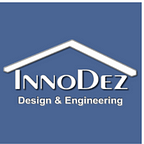Radiant Heating and Cooling Systems
Introduction
Forced-air HVAC systems are still the predominant technique of cooling and heating commercial buildings in the US. However, radiant heating & cooling systems are emerging as part of high-performance buildings.
For starters, radiant systems transfer energy through a surface that contains piping with cooled/ warmed water or a mix of water and glycol. As a result, there are relatively small temperature differences between the heating/ cooling source and the room’s set point. This leads to significant energy savings and increased energy distribution efficiency. At the same time, these systems provide better comfort, based on the climate and the building.
However, radiant heating and cooling systems are not ideal for all situations. In this article, we’ll show you which applications you can use these systems for as well as the different types available. In addition, we’ll take you through the several benefits offered by radiant HVAC systems!
How radiant heating & cooling systems work
A radiant HVAC design system distributes heated fluid from a source of warm water through plastic tubing embedded in the walls, ceiling, or floors of a room. The piping then conducts heat to the surface, which serves as a large, gentle radiator.
If the heated surface uses infrared emissions to emit over 50% of its heat energy, it’s known as a radiant heating system. Heated floor radiant systems emit heat to every item near the floor. In the process, it warms people and objects in the space, while allowing warm air to rise from the floor. This provides the comfort you’ll not experience from any other form of heat delivery system.
Radiant cooling systems, on the other hand, are usually designed together with radiant heating. More notably, they use the same system of embedded plastic piping as the radiant heating system to circulate chilled fluid. As a result, these tubes turn ceilings, floors, and walls into cooled surfaces that uniformly absorb sensitive heat energy. This includes radiant heat energy from people, computers, solar gain, lights, etc, and some convective heat energy from the air.
Types of radiant heating & cooling design systems
- Air-heated Radiant system
Air-heated radiant systems warm the floor by circulating warm air through tubes built into the subfloor. As a drawback, these thermal losses in these systems are significant since air is the medium. Besides, air can’t hold large amounts of heat energy. For that reason, these systems aren’t cost-effective in small commercial and residential applications.
- Electric radiant heating systems
In essence, electric radiant floors consist of electric cables that are installed beneath the floor. This type of radiant heating system includes electric conductive plastic that is mounted on the subfloor surface below the floor covering.
Due to the relatively high electricity costs, these systems are only cost-effective when your utility provider offers time-of-use rates. They’re also suitable when your floor includes a considerable thermal mass like thick concrete. That way, you can ‘charge’/ heat the floor during off-peak hours and the floor will store it if its thermal mass is big enough. This will keep your house comfortable for about 8–10 hours without further electrical input. That said, electric radiant heating floor systems are more efficient when used in commercial buildings.
You can also use an electric radiant heating floor if it’s impractical to extend the system into a new space. Nonetheless, you can consider other options like mini-split heat pumps, since they’re more efficient and have the added benefit of providing cooling.
- Hydronic Radiant heating systems
Hydronic (liquid) radiant heating is the most cost-effective and popular technique used in radiant HVAC systems. In this approach, an efficient gas-fired boiler heats water, which is then pumped into tubes built beneath the subflooring or slab through a network of tubes. The heat warms the flooring/ slab effectively and radiates up into the room.
One major benefit of these systems is that you can easily control the water floor. You can accomplish that by incorporating electronic valves into the hydronic system. This will allow you to ‘zone’ heating to certain rooms by decreasing or increasing the movement of warm water into various zones.
- Radiant cooling systems
Generally speaking, a radiant cooling system reverses the fundamentals of radiant heating. In other words, it extracts radiant heat out of the living space, thus lowering the indoor temperature.
A typical radiant cooling system features a highly-heat absorbing metal panel with tubes that circulate chilled water. More importantly, these panels are usually mounted on ceilings to serve as passive heat exchanges. That way, as hot air rises above the floor, the heat energy is absorbed out of the air. However, for this process to operate efficiently, the indoor air must always be completely dehumidified.
Benefits of Radiant heating & cooling systems
Overall, radiant HVAC design systems are efficient, clean, controllable, comfortable, invisible, silent, and maintenance-free. In other words, they will improve the comfort of your living space while reducing the amount of energy used for cooling and heating. Besides, they’ve reduced maintenance and operational costs, and have better efficiency than other HVAC systems. Best of all, radiant pipes are usually embedded in ceilings, walls, and floors. This leaves more space on the floors and takes up less space for ductwork.
Final Word
To sum up, using radiant heating & cooling systems is a great way to enhance the comfort and energy efficiency of occupied spaces. On the same note, these systems will help your building to achieve sustainable recognition and certifications like LEED. Besides, they offer a cost-effective approach to improve the building’s energy performance level by ensuring even & efficient cooling & heating.
To learn more about Radiant heating & cooling system for your residential, industrial, commercial, or institutional facility in California, contact Innodez! Our HVAC experts will conveniently integrate these systems into your building’s mechanical design to create a high-performance HVAC system.
